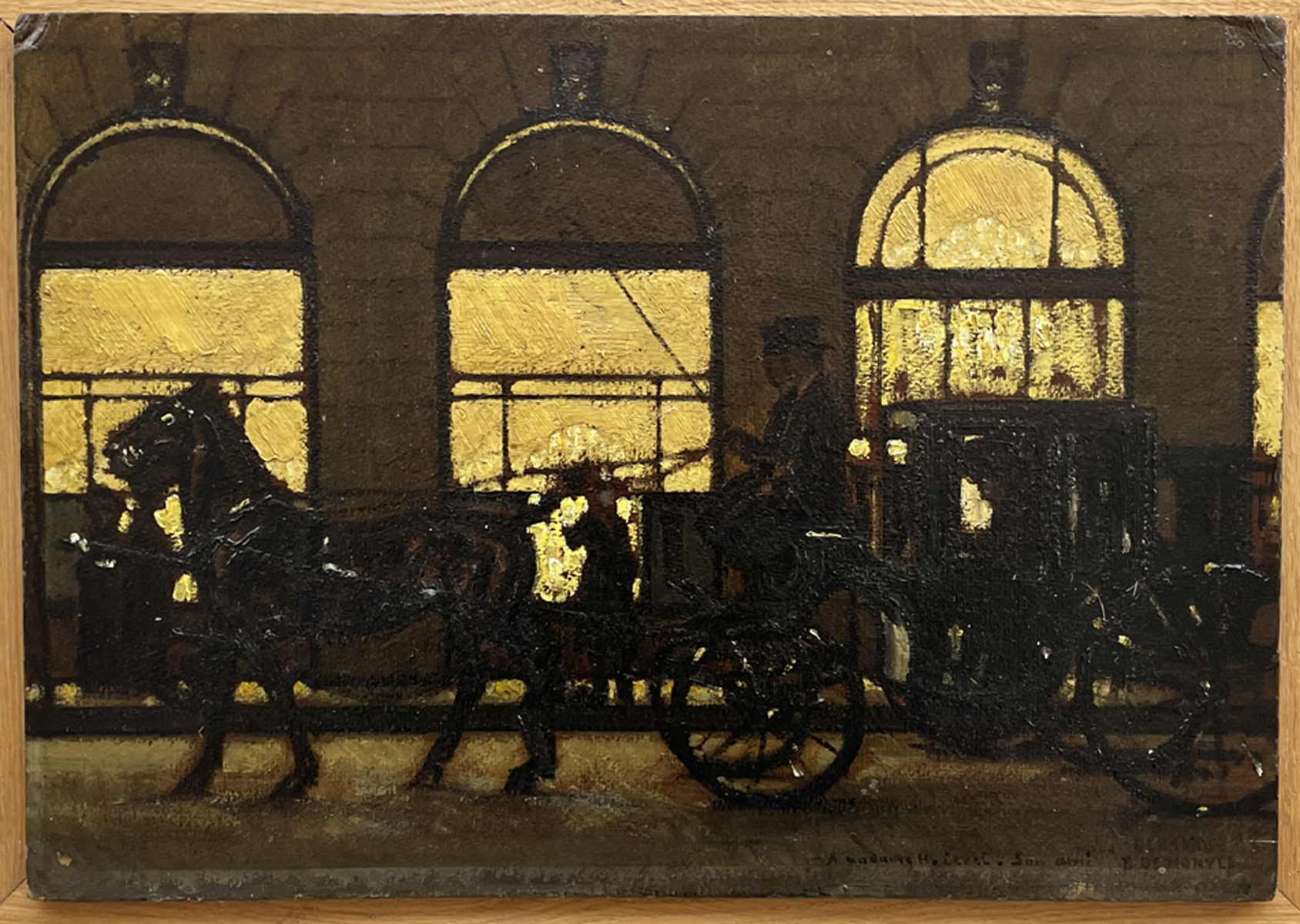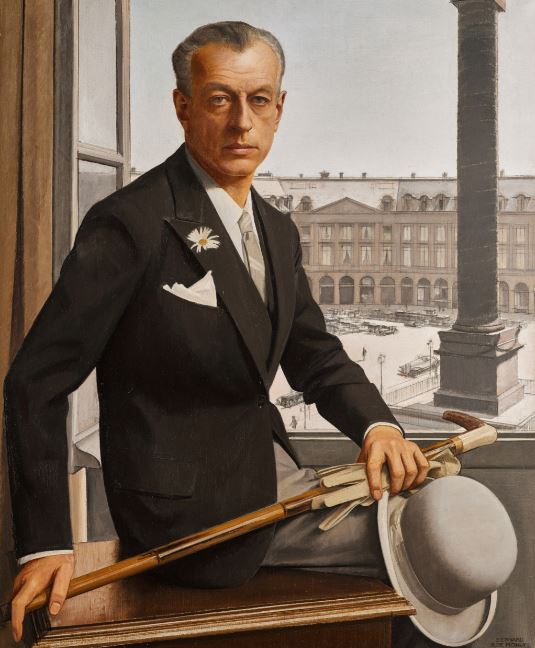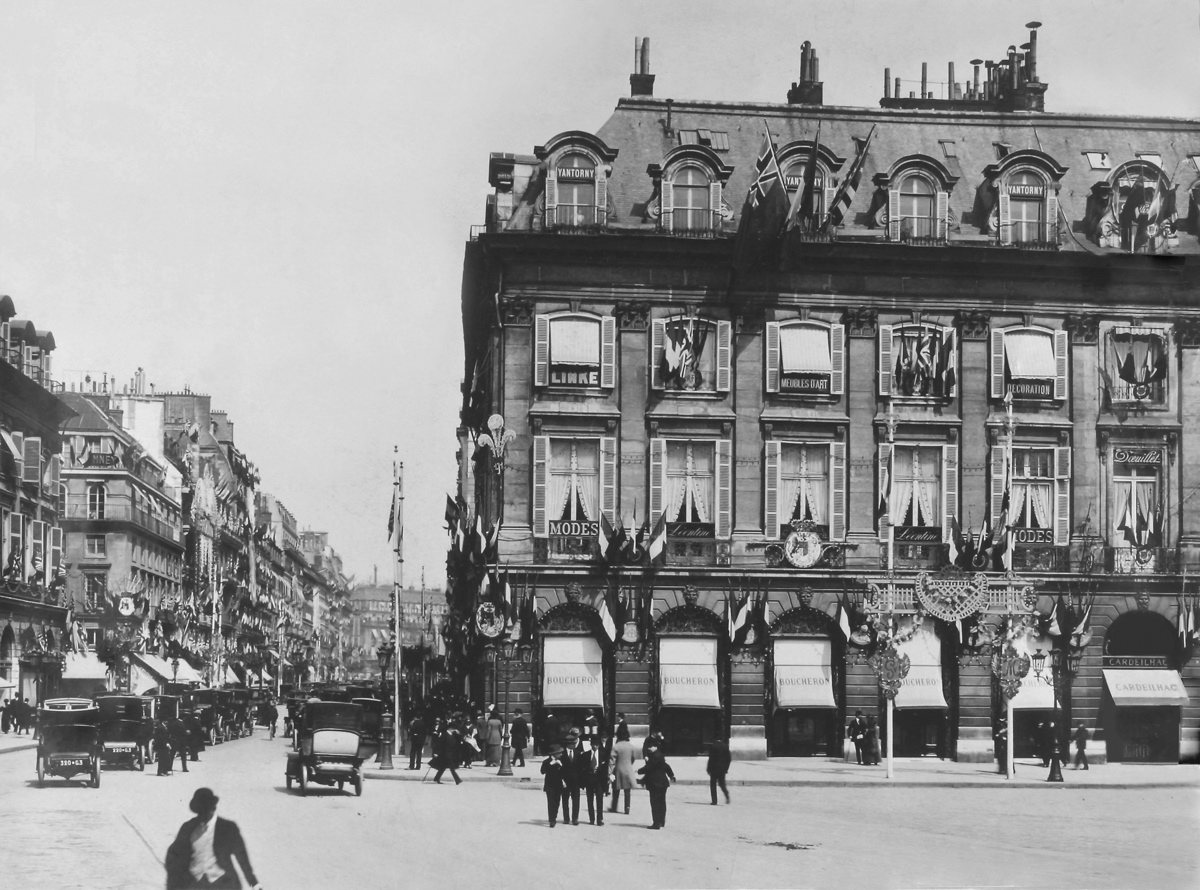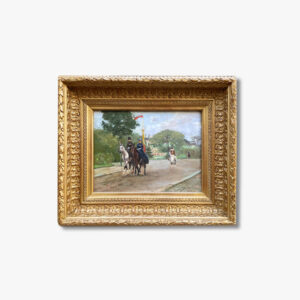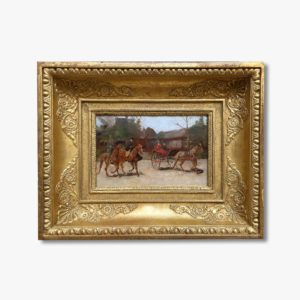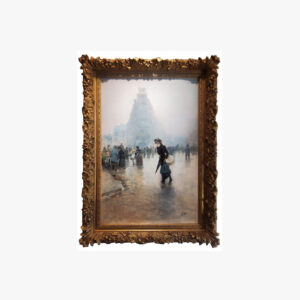Paris Déco off-Oil on panel, Night carriage in Paris by Boutet de Monvel
Paris Déco off-Oil on panel, Night carriage in Paris by Boutet de Monvel
Prix sur demande / prices on request
Paris Déco off-
BOUTET de MONTVEL 1881-1949
From a great Lorraine bourgeois dynasty, he was the son of a famous children's painter and illustrator: Louis Maurice Boutet de Monvel
A curious artist and tireless worker, from the very start of his career he opened up his artistic field to a wide range of techniques.
He began learning to paint in 1897 in Olivier Merson's studio.
He took sculpture lessons from Jean Dampt.
Further information
Encouraged by an American painter, he learns etching (an engraving technique).
Boutet de Monvel was to become one of the great masters of etching.
Success came quickly. By 1912, the Chicago Institute was exhibiting his color etchings.
Today, the artist is best known for his paintings, a career he developed alongside his engravings.
Here, too, critics and collectors were delighted. Present at all the Salons from 1903 onwards, both in Europe and the United States.
His painting evolved in different ways throughout his career.
At first, the artist treated his subjects in full-body, highly colored brushstrokes framed by shadows.
He then turned to pointillism in 1904, and his works radiate light and lightness, perspective disappearing slightly and subjects appearing more rigid.
From 1909, he began to practice his art with rulers and compasses, bringing a geometric, photographic and rectilinear vision to his portraits and genre scenes.
Boutet de Monvel was already a precursor of Art Deco.
From then on, he never varied his painting style.
His paste was reduced to a few colors, notably cameos of browns, yellows and lots of black (like our painting).
Then came the war, when his heroism earned him the admiration of all.
In 1919, he moved to Morocco, where he resumed painting (which he had abandoned). He then returned to Paris and resumed his career as a portrait painter.
In 1927, the Baltimore Museum of Art devoted an exhibition to his paintings. From then on, he went there every year and became the almost official portraitist of the Café Society. When the Second World War broke out, he chose not to leave France and continued to paint.
He died in 1948, aged 68, in a plane crash on the Paris-New York route.
Our picture, painted in 1907, is set in the very Parisian Rue de la Paix, close to Place Vendôme, and more precisely, in front of the luxurious Hôtel de Nocé.
The horse-drawn carriage is one of the painter's favorite subjects, recurring constantly in his work.
Day or night, Boutet de Monvel pays tribute to this mode of transport, which has made Paris famous for its elegance.
The car shown appears to be a coupé.
This shape corresponds to the artist's rectilinear requirements.
The obsession with line and perfect composition, bordering on cubism, is already apparent.
This is an opportunity to combine the classicism of the façade with the luminosity of the windows of the capital's finest jewellery houses: Breguet and Boucheron, installed on the first floor.
Here, the artist demonstrates his ability to work with black like Manet.
Black in all its sensitivity, subtlety and strength, enhanced by the incandescent glow of the boutiques in the background.



